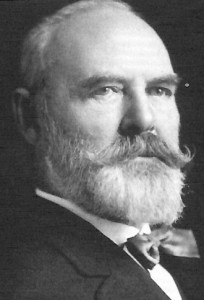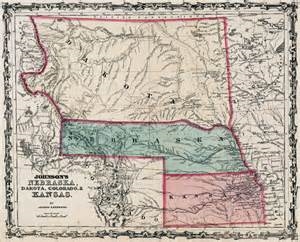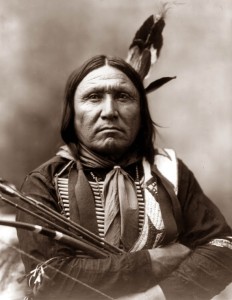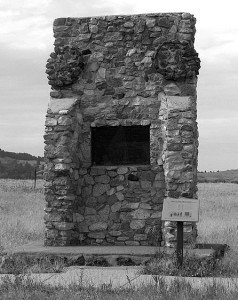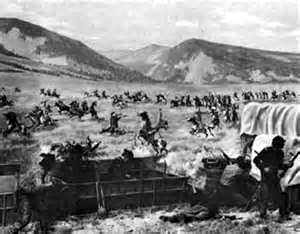Max Littmann
Values Codes I-E-L-P
Max Littmann was born in Berlin in 1845.
He was trained to be a cigar maker.
He arrived in the United States in 1865.
Along the way . . .
In March of 1866 Max Littmann enlisted in the United States Army.
He was sent to Jefferson Barracks in St. Louis, assigned to the 3rd battalion, 18th Infantry.
At the time of his enlistment, Littmann was described as being 5’4” in height.
Fort Kearny
Max’s battalion was sent West to Fort Kearny in the Nebraska Territories, now part of Wyoming.
He was assigned to the 2nd battalion, C Company.
“In seven months after I enlisted I was made sergeant of my company, although I had not any means mastered the language. All my orders for my company were written down for me in English, which I memorized, word for word.”
— Max Littmann
The Wagon Box Fight
While stationed at this post, Max Littmann became known as “Hero of the Wagon Box Fight.”
On August 2, 1867, twenty-six soldiers and six civilian woodcutters on what was known as the Bozeman Trail formed a circle of wagons and withstood an attack by 1,000 Sioux and Cheyenne.
Private Sam Gibson, on guard duty outside the wagon circle recalled:
“We soon saw one of our men run out to meet us from the main camp. He dropped on one knee about a hundred yards from the main corral and opened a rapid fire on the advancing hordes of savages. Several fell from their ponies under his accurate fire. This man proved to be one of our sergeants, Littlemann by name, who, by his courage and thoughtfulness in coming out to meet us, and the rapidity and effectiveness of his fire, saved us from being surrounded and cut off by the red devils. We were thus able to reach the main camp in the wagon box corral.”
Three soldiers were killed by the Indians.
The soldiers had just been outfitted with Springfield breech-loading rifles, allowing them to fire up to 20 rounds per minute, compared to 1 or 2 shots with older muzzle-loaders.
The Indians were confused over the rapid fire-power of the defending “palefaces.”
Max Littmann “dropped” a large Miniconjou Sioux named Jipala.
Max forever considered this as a personal duel — between him and “Goliath.”
The victory for the small force of soldiers was made possible by reinforcements from Fort Kearny, equipped with a howitzer cannon.
For young Max, like many other soldiers, this was the high point of his military career.
Max was discharged in 1869.
St. Louis
Max Littmann returned to St. Louis and worked shining shoes at a downtown hotel.
There, he met Charles Nixdorff, who, along with Franz Krein, owned a blacksmith shop.
Nixdorff and Krein made their livings converting boats to wagons and outfitting westbound wagon trains.
They persuaded Max Littmann to leave his post as a bootblack to go to work for Nixdorff-Krein.
By 1885, Max had bought out both Nixdorff and Krein. He became President of the company, keeping the company’s name because of its reputation.
Nixdorff-Krein continued producing wagon hardware and metal chains, and later began manufacturing equipment for basketball and other sports.
In 1989, still in family hands, Nixdorff-Krein became the exclusive supplier of backboards and goals to the NBA.
Community
Max Littmann was one of the founders of Temple Israel of St. Louis.
Max helped fund and develop the Mount Sinai Jewish Cemetery.
Family
Max Littmann married Marie Baer, whose family was from Karlsruhe, Germany.
Their four children were Bernhard, Hannah, Sophie, and Edgar.
Max Littmann died while on a trip to Europe in 1921, a victim one of the great influenza epidemics.
His body was returned to St. Louis and he was buried in the Mount Sinai Cemetery.
Sources
- Jerry Keenan, :Max Littmann: Immigrant Soldier in the Wagon Box Fight,” Western States Jewish Historical Quarterly 6/2.
- Norton B. Stern, “Max Littmann and Sigmund Shlesinger: Jewish Heroes of the Indian Wars,” Western States Jewish History 41/4.
David Bittner is curator for this Max Littmann exhibit.
Note: This exhibit is located in the Missouri Exhibition Hall because it is where Max Littmann settled before and after his 4 year army career.
Additional thanks to the children & descendants of Muriel & Lewis E. Littmann, MD. Lewis was a son of Bernhard; Max and Marie were his grandparents.
